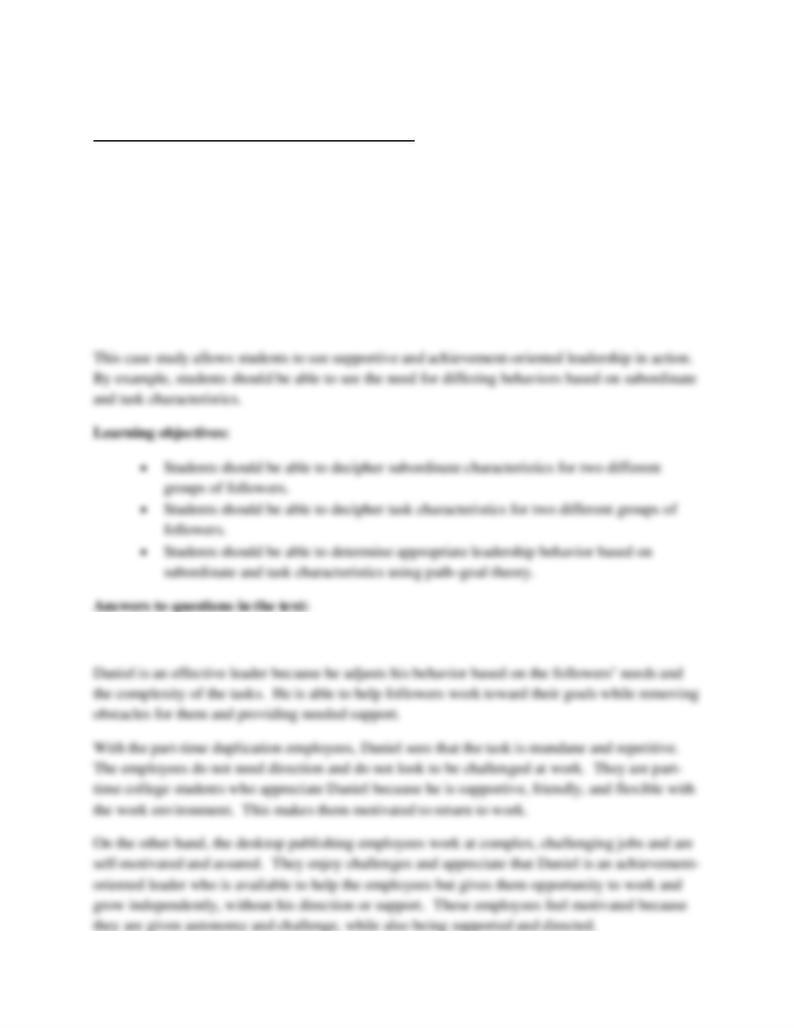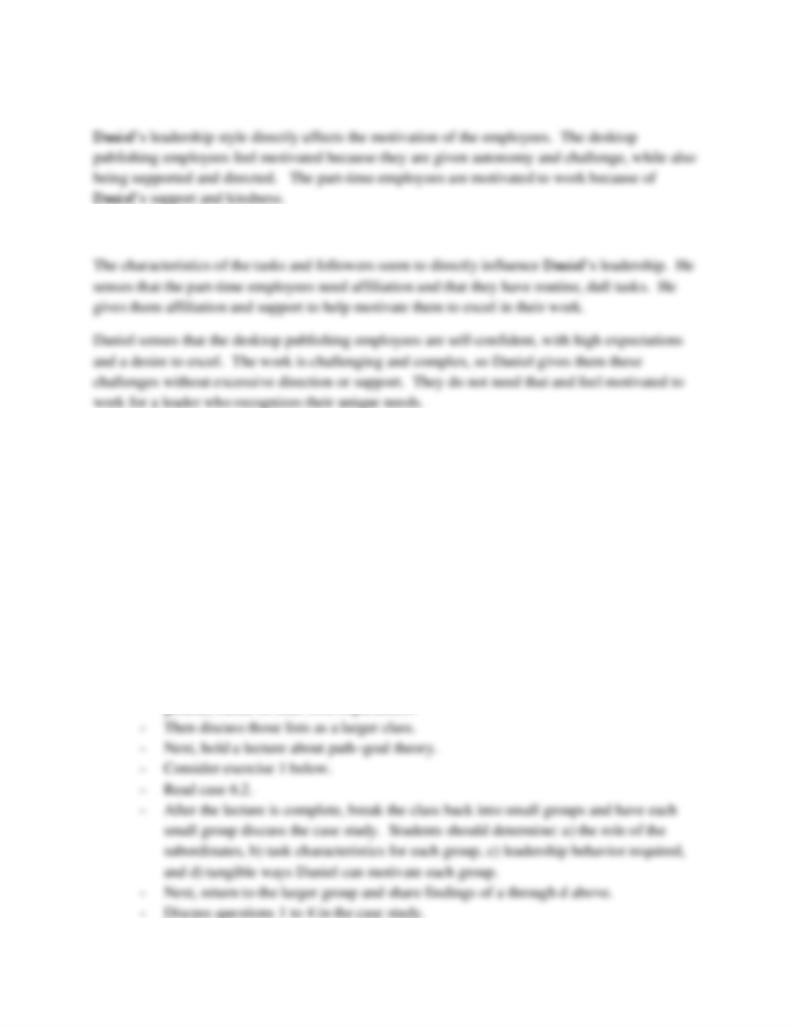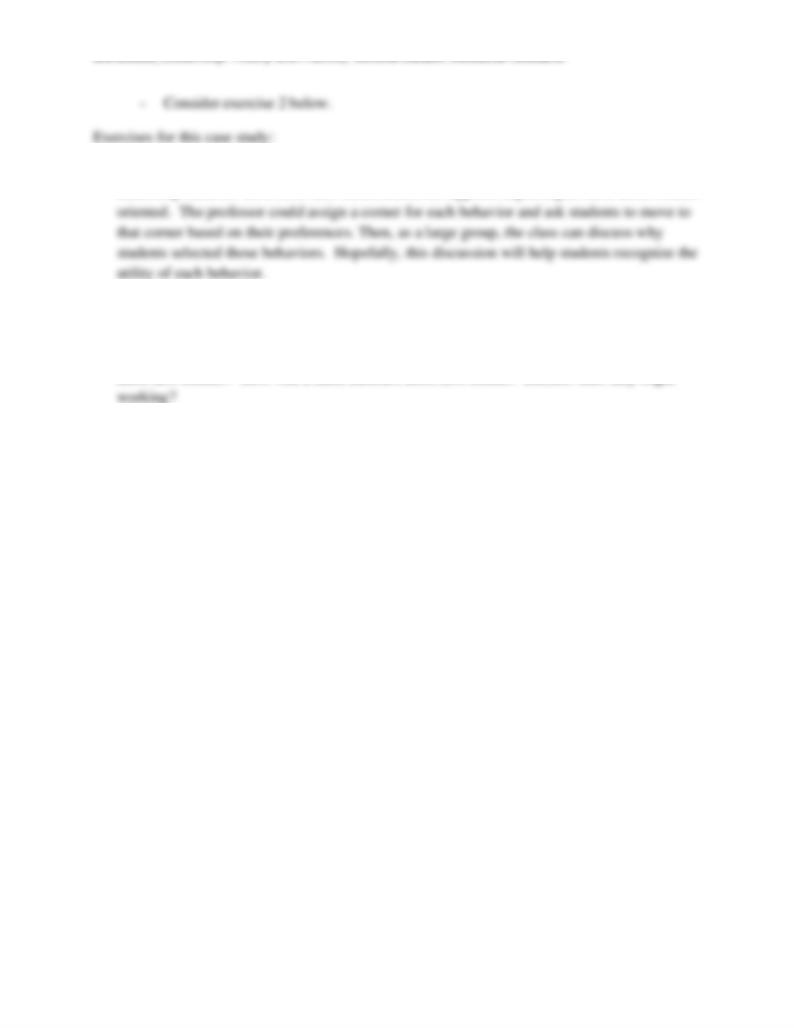
Northouse, Leadership: Theory and Practice, Seventh Edition: Instructor Resource
Case 6.2 Direction for Some, Support for Others
Case synopsis and analysis
Daniel is an effective leader and owner of a profitable copy center near a large university. Some
of his employees are part-time college students who work on standard copy and duplication jobs.
Daniel knows this work is repetitive and mundane, but he provides a fun environment for these
employees and works to get to know them on a personal level. Daniel’s other employees work
desktop publishing, a more complex and demanding job. These employees are autonomous, self-
motivated, and assured. Daniel is a resource person for these employees, giving them space to
conduct their work while being available for support and assistance when needed.
1. According to path–goal theory, why is Daniel an effective leader?

Northouse, Leadership: Theory and Practice, Seventh Edition: Instructor Resource
2. How does his leadership style affect the motivation of employees at The Copy Center?
3. How do characteristics of the tasks and the followers influence Daniel’s leadership?
4. One of the principles of path–goal theory is to make the end goal valuable to workers. What
could Daniel do to improve follower motivation in this area?
Daniel could tie profit to the bonuses of these workers. He could also honor key employee
contributions and successes regularly and work one-on-one to ensure each employee is motivated
to excel at work and grow the business.
Potential teaching approaches:
This case study is conducive to small-group discussions and role plays.
Below is a way to structure a class, based on the path–goal theory and case study 6.2:
- First hold a small-group discussion: Break your class into groups of three to five
students. Have each group develop a list of the top 10 ways to motivate a team in
general, based on their own experiences.

Northouse, Leadership: Theory and Practice, Seventh Edition: Instructor Resource
1) If the class has 30 or fewer people: The professor asks students to decide what type of
leadership behavior most motivates them: directive, supportive, participative, or achievement
2) Small-group work: Daniel has become ill and needs to train employees to lead the desktop
publishing and duplication units. Should he train one or two people? Students should decide
what type of person/people he should train to assume leadership roles, and discuss what these
leaders need to do or know about leadership. What sort of training should Daniel do with
these new leaders? How will Daniel measure these new leaders’ abilities once they begin